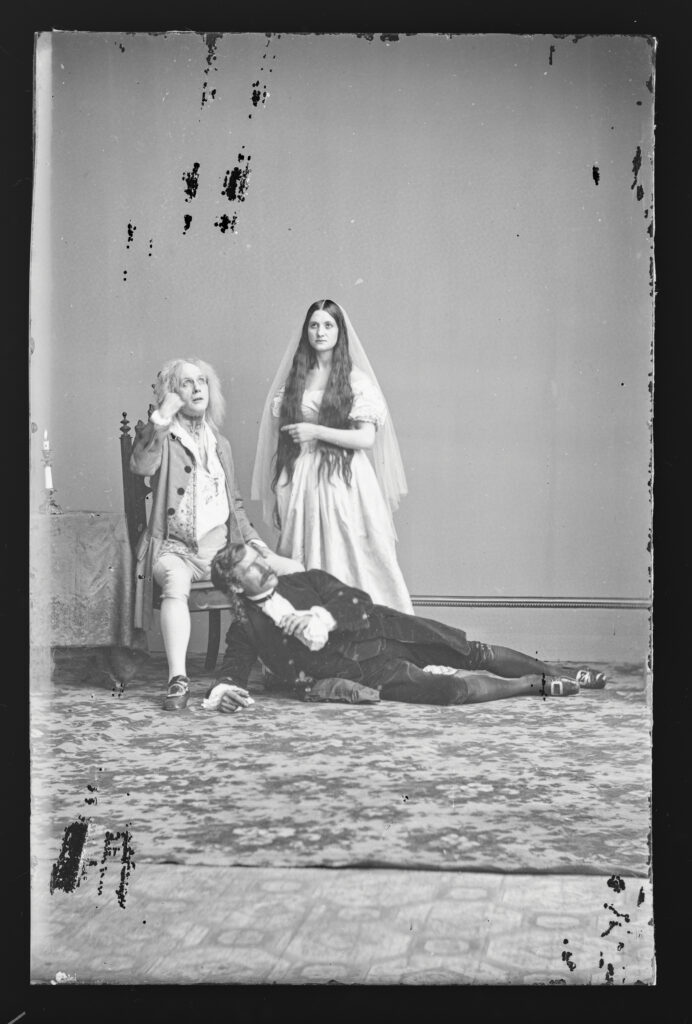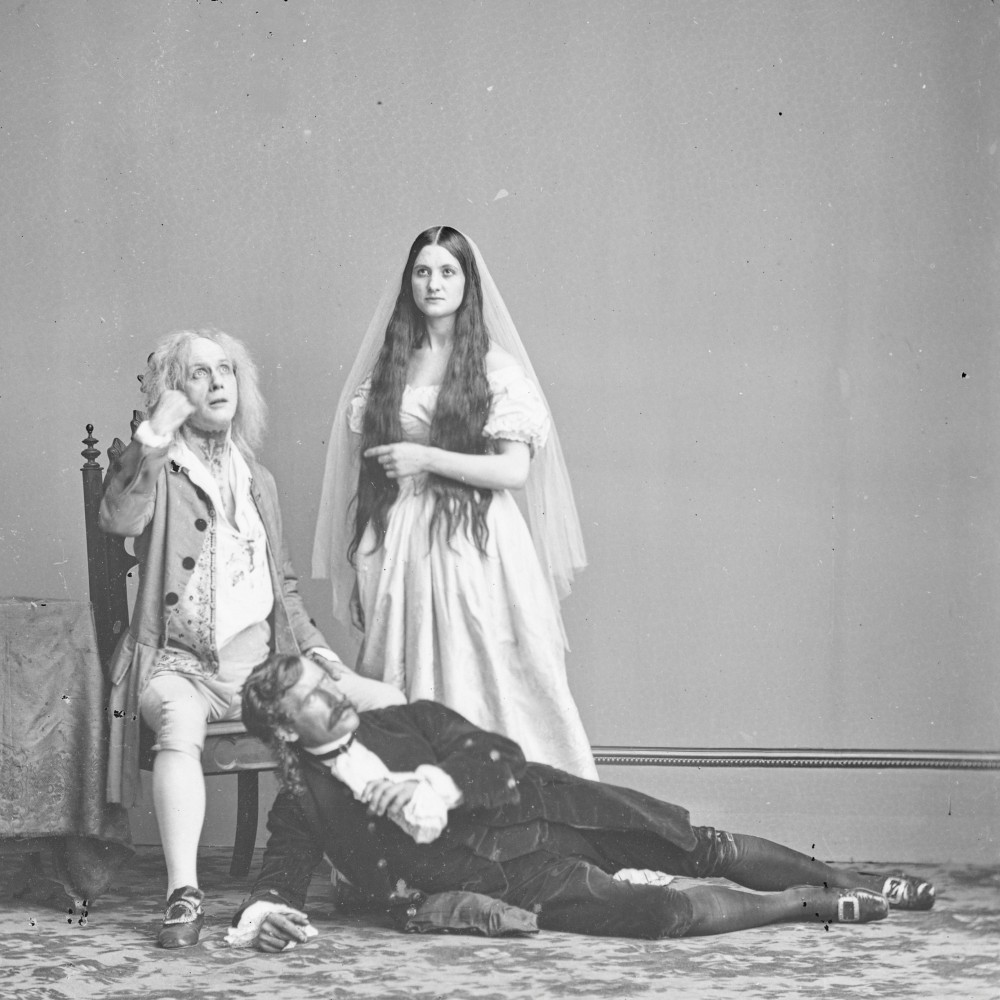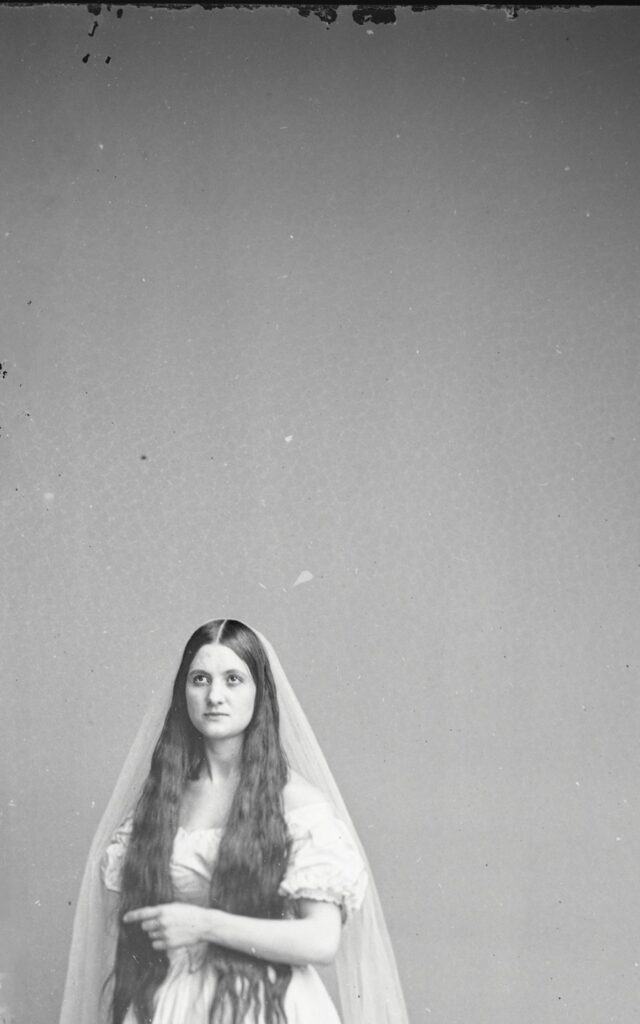

Licensed by CC0 1.0 Universal
I chose this image because I’m curious about these people. The original photograph was taken with a large format camera and a glass plate. This same photograph could be taken today with the same camera and be just as haunting, but we wouldn’t have the same stories to share. I think there’s something special about all of the space in the original photograph; the people seem more distant, almost intangible. The first crop brings them closer, the attention drawn to the Man in White. The image is weighted, the people rooted and more tangible. It’s a more formal portrait, maybe? I chose to edit out some of the missing spots from the negative using the “heal” tool in Pixlr.

The second crop isolates the woman. I think she appeared a little removed from the scene to begin with. Now, she is surrounded by space above, her eyes pointed up, the viewer follows her eyes. Is she rolling eyes? Deep in thought? Saying a prayer? She could be looking at anything; thinking about anything. The viewer could also follow her pointed finger but this is more uncomfortable because there is nowhere to look, or perhaps a shorter distance to wonder. I used the heal tool to edit out those black spots again. The eraser tool and heal tool removed the rest of the Man in White from the bottom left corner. A deeper vignette was added to bring depth to the image.
The original image is part the Frederick Hill Reserve Collection at the Smithsonian.
To learn more about glass plate collodion negatives, I visited this PBS site.


Hi Jennifer!
The theatrics captured in your found photo from the 1800s is stunning. Each person photographed seems to be exhibiting a different train of thought, yet, they are all attempting to pose in one cohesive shot. While the square crop helps to narrow in focus and cut out excess negative space, I am instantly drawn to your second crop–a still of a woman carrying depth in her eyes. I can agree that choosing her to be the main subject of the entire cropped image creates an aura of wonder, causing viewers to pause in speculation of what she’s thinking. The deeper, yet subtle vignette adds a haunting effect, as if she’s a scorned bride back from the dead or contemplating revenge on her husband. If the man sitting in the chair was absent from the photo, I’d counter that cropping the image to include the man thrown across the floor, with the bride looming above would also tell an interesting story.
Hey Jennifer!
I really enjoyed the image you chose as I enjoy the various expressions on the people’s faces. Especially since so many old photograph portraits the people have such serious expressions. I especially liked the first cropped image as it got rid of the contrast in the flooring and the black marks in the top of the image. I also liked how you singled out the woman in the image for your second shot as it now focuses solely on her expression. I feel the empty space in the top made the image a little larger than it needed to be but I get you are following rule of thirds as well.